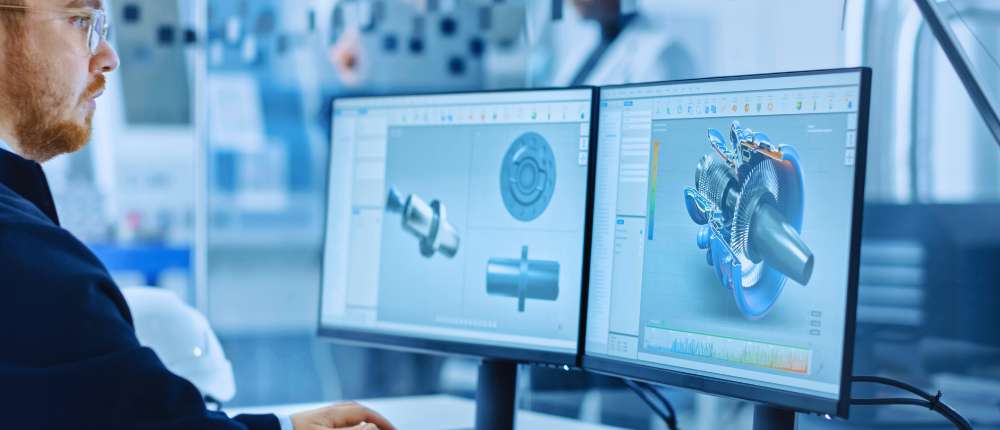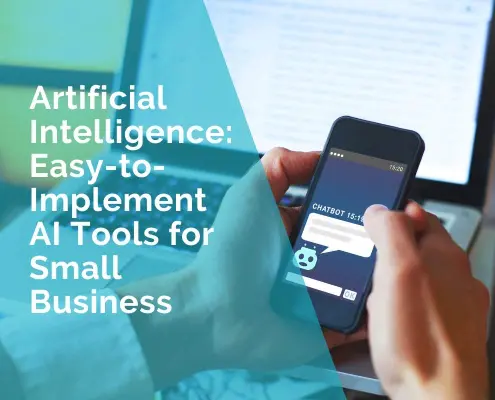Unlocking Success: The Power of Computer Vision Software in Business
Computer vision software is a groundbreaking technology that enables computers to interpret and process visual information from the world around them, much like the human eye and brain. By leveraging advanced algorithms and artificial intelligence, this software can analyze images, videos, and live feeds to identify objects, detect patterns, and make decisions in real-time. From facial recognition and object detection to quality control and automation, computer vision software has a wide range of applications that are transforming industries. Its ability to provide accurate and actionable insights is why it’s becoming an essential tool for businesses looking to innovate and improve efficiency.
Critical Benefits of Computer Vision for Businesses
Enhanced Operational Efficiency
One of the most salient benefits of computer vision software is that it enhances operational efficiency. It enables businesses to automate visual inspection processes, significantly reducing the time required for quality control and monitoring. For example, computer vision systems in manufacturing can identify defective products much faster and more accurately than human workers. This helps to smoothen production lines and reduce waste and rework costs, eventually saving a lot of money over time.
Cost Reduction
The use of computer vision can save a lot of money. With reduced needs for visual inspections and less laborious tasks, payroll can be reduced, and businesses could avoid commonly occurring expensive human errors. Ford has so far been able to apply the prowess of computer vision to its assembly lines, having as high as 15% increase in speed of assembly while maintaining reduced operational costs. Furthermore, predictive maintenance powered by computer vision can help identify potential equipment failures before they occur, reducing unplanned downtime and maintenance costs. For more information on selecting the right computer vision software tailored to your business needs, visit https://data-science-ua.com/computer-vision/.
Improved Quality Control
Quality control is crucial in ensuring customer satisfaction and maintaining a brand reputation. Computer vision systems excel in this area, as they work on real-time monitoring and analysis of products during production. Advanced algorithms detect even minor deviations from quality standards, ensuring that only flawless products reach the market. This capability is particularly critical to industries like pharmaceuticals and electronics, where product defects can even entail serious consequences.
Data-Driven Insights
Computer vision software generates copious amounts of data. Analysing this data can reveal valuable information concerning operational processes. This information allows businesses to refine resource allocation, improve inventory management, and create better decision-making strategies. For instance, retailers can use computer vision to track customer behaviour in their stores, enabling them to tailor marketing strategy and product placement effectively.
Competitive Advantage
As computer vision technology evolves, organisations that introduce it into their practice almost immediately outperform their competitors. Companies present themselves as progressive players in their industry by embracing innovative solutions that improve operational and customer experience. One can leverage visual information to facilitate internal processes or attract modern customers who appreciate the presence of advanced technologies.
How Small Businesses Can Benefit from Computer Vision Software
While large corporations are generally the first to implement new technologies, small businesses can also take advantage of computer vision software to gain an operational edge, enhance customer experience, and remain competitive. Following are some practical examples of how small enterprises can incorporate computer vision:
Retail and E-commerce
Small retail stores and e-commerce businesses can utilise computer vision for visual merchandising and customer behaviour analysis. By deploying in-store cameras and AI-driven software, small businesses can track foot traffic, monitor which products draw the most attention, and optimise store layouts. Similarly, e-commerce platforms use image recognition to automate product categorisation, enhancing the shopping experience by enabling faster searches and more accurate recommendations.
Inventory Management
Smaller businesses frequently lack the resources and staff levels to address inventory control, for which computer vision can help. Computer vision can automate inventory so that stock counts become incredibly accurate. Consider a small clothing store utilising computer vision to keep real-time tabs on shelf stock and automatically reorder products when thresholds have been met without manual inputs. This will help avoid overstocking or stockouts of products while freeing up man-hours spent counting inventories.
Quality Control for Craftsmanship
Detailed quality control in small-scale production, or craftsmanship in general, is also possible under computer vision. Be it the local bakery making sure that the pastry produced is the same or a handmade furniture producer checking for imperfections, it can provide flaws at a microscopic level to improve the final product and customer experience.
Customer Service Enhancement
Small businesses can integrate computer vision to improve customer service in unique ways. For example, restaurants can use facial recognition to personalise service by greeting returning customers by name or tailoring promotions based on previous purchases. Additionally, small cafes or retailers can use camera-based systems to monitor wait times, ensuring customers are attended to promptly, thus improving overall service quality.
Security and Theft Prevention
Security is a significant concern for small businesses, especially those operating in high-risk areas. Computer vision software can further improve surveillance systems by automatically spotting unusual activities. A small convenience store or boutique can easily install cameras that would trigger alerts to the managers when suspicious behaviour, such as potential theft, occurs, allowing them to intervene as quickly as possible and reduce their losses.
By embracing computer vision, small businesses not only save time and reduce costs but also position themselves as forward-thinking and efficient, enabling them to have an edge in their respective markets.
Successful Implementations Across Sectors
Computer vision has found applications across various industries with remarkable success stories:
Manufacturing
In manufacturing, companies increasingly utilise computer vision for quality control and optimisation. For example, a major automotive manufacturer implemented a computer vision system that reduced defect rates by 30% and improved production efficiency. By automating visual inspections on the assembly line, they were able to reallocate human resources to more complex tasks that require critical thinking.
Retail
Retailers use computer vision technology to improve customer experiences and optimise operations. A leading retail chain adopted a computer vision solution to monitor inventory levels in real-time, allowing for automatic stock reordering when levels fell below a certain threshold. This implementation not only reduced stockouts but also improved inventory turnover rates.
Healthcare
In healthcare, computer vision is used for medical imaging analysis and patient monitoring. Hospitals have started employing AI-driven imaging systems that assist radiologists in detecting anomalies in X-rays and MRIs more accurately than traditional methods. This advancement speeds up diagnosis and improves patient outcomes through timely interventions.
Selecting the Right Computer Vision Software
When choosing computer vision software for specific business needs, several factors should be considered:
Identify Specific Use Cases
The chosen software should be feasible to operate within existing systems and workflows within the organisation. Compatibility with existing technologies ensures a smoother implementation and maximises the ROI.
Scalability
As businesses grow, so do their needs. Therefore, selecting a computer vision solution that can scale quickly to changing demands without requiring significant overhauls or additional investments will be necessary.
Integration Capabilities
The chosen software should be feasible to operate within existing systems and workflows within the organisation. Compatibility with existing technologies ensures a smoother implementation and maximises the ROI.
Vendor Support
This means that a reputable vendor providing extensive support services needs to be chosen since the implementation and maintenance of the system will depend on them, ranging from training staff in using the software to troubleshooting problems.
The demand for computer vision software is growing at an unprecedented rate as businesses increasingly recognise it as a driver of efficiency, cost reduction, quality control, and insight into operations. Successful implementations in diverse sectors prove its versatility and effectiveness in ensuring better business performance. If correctly chosen, the solution would help organisations competitively gain a lead in this marketplace, which is getting digital through the use of the same technology.
***
Dmytro Kharyna










